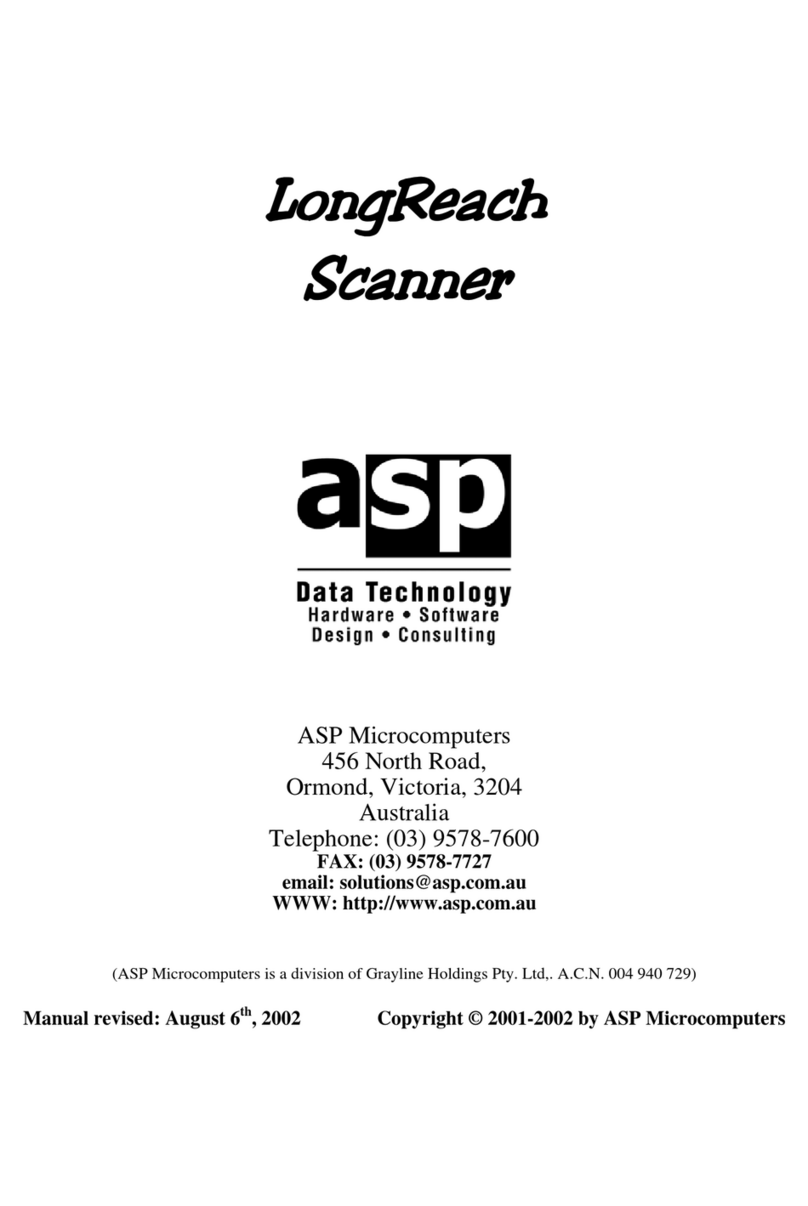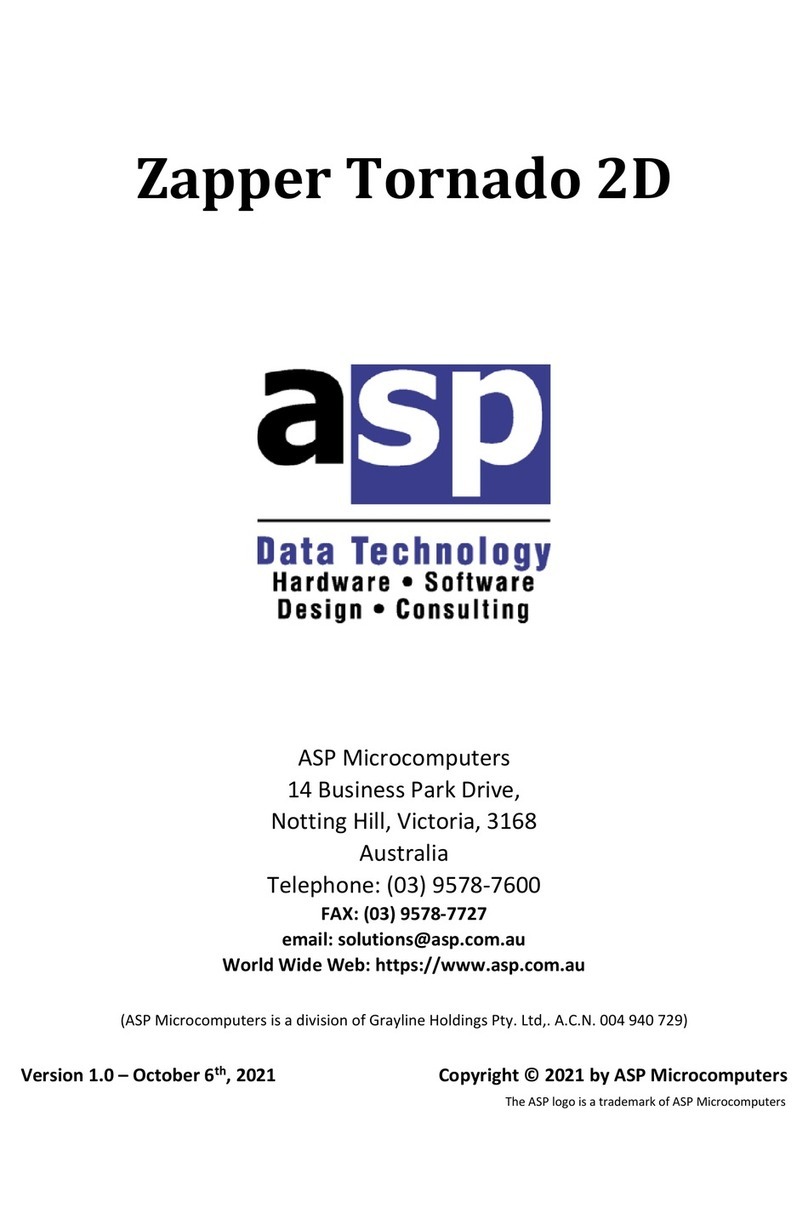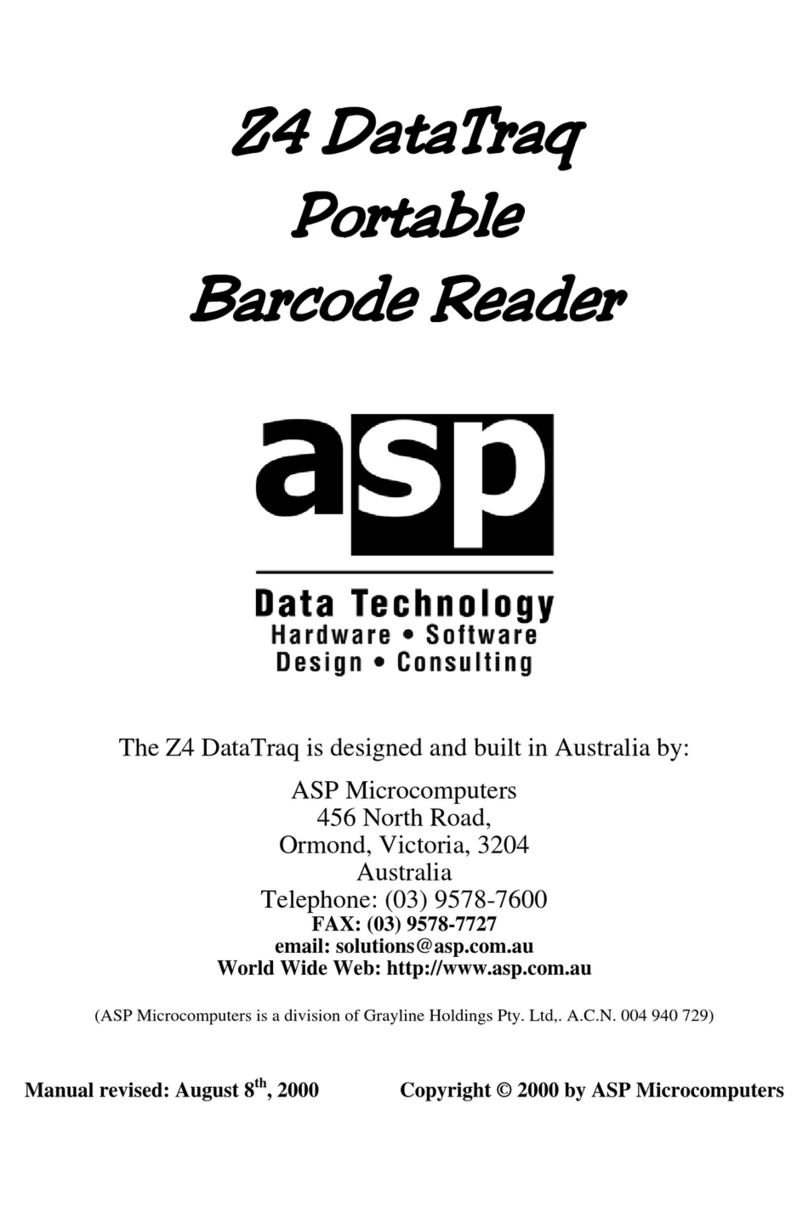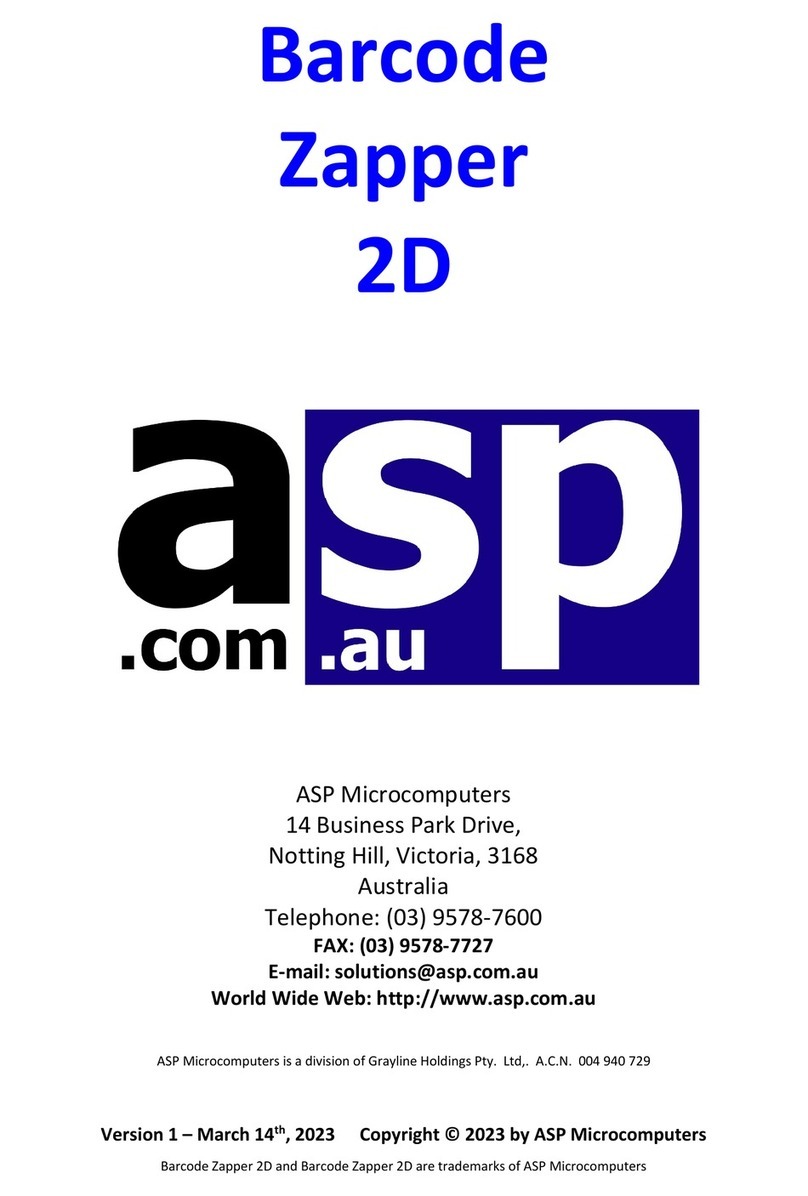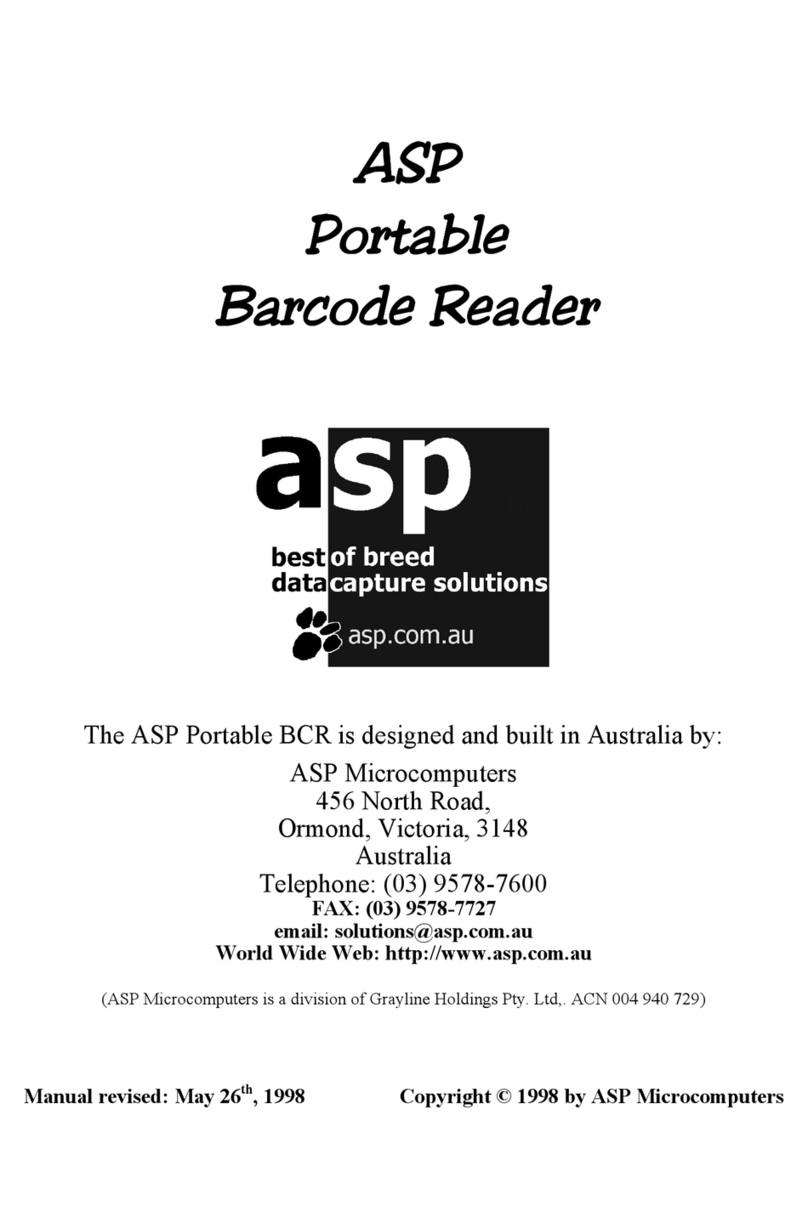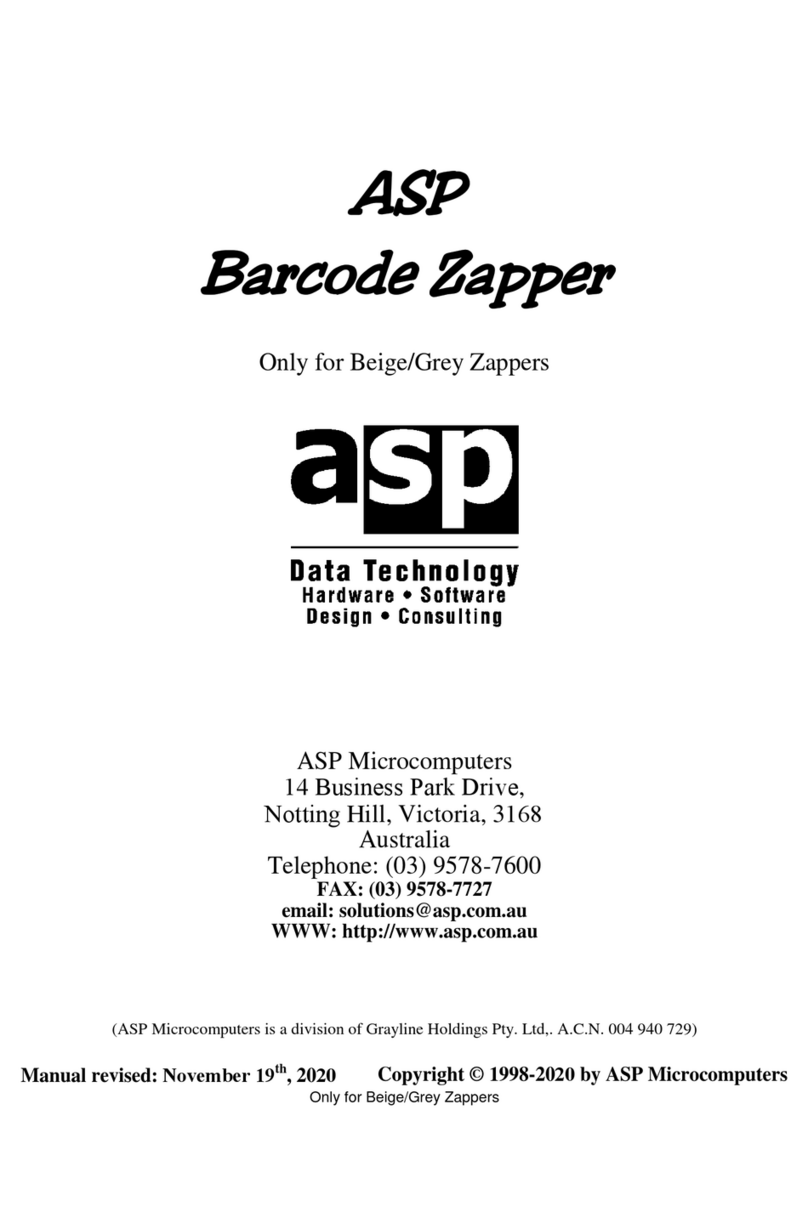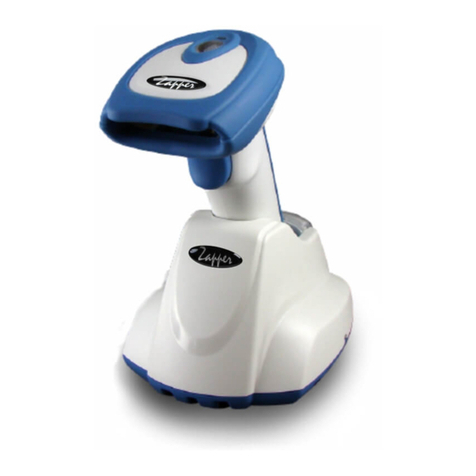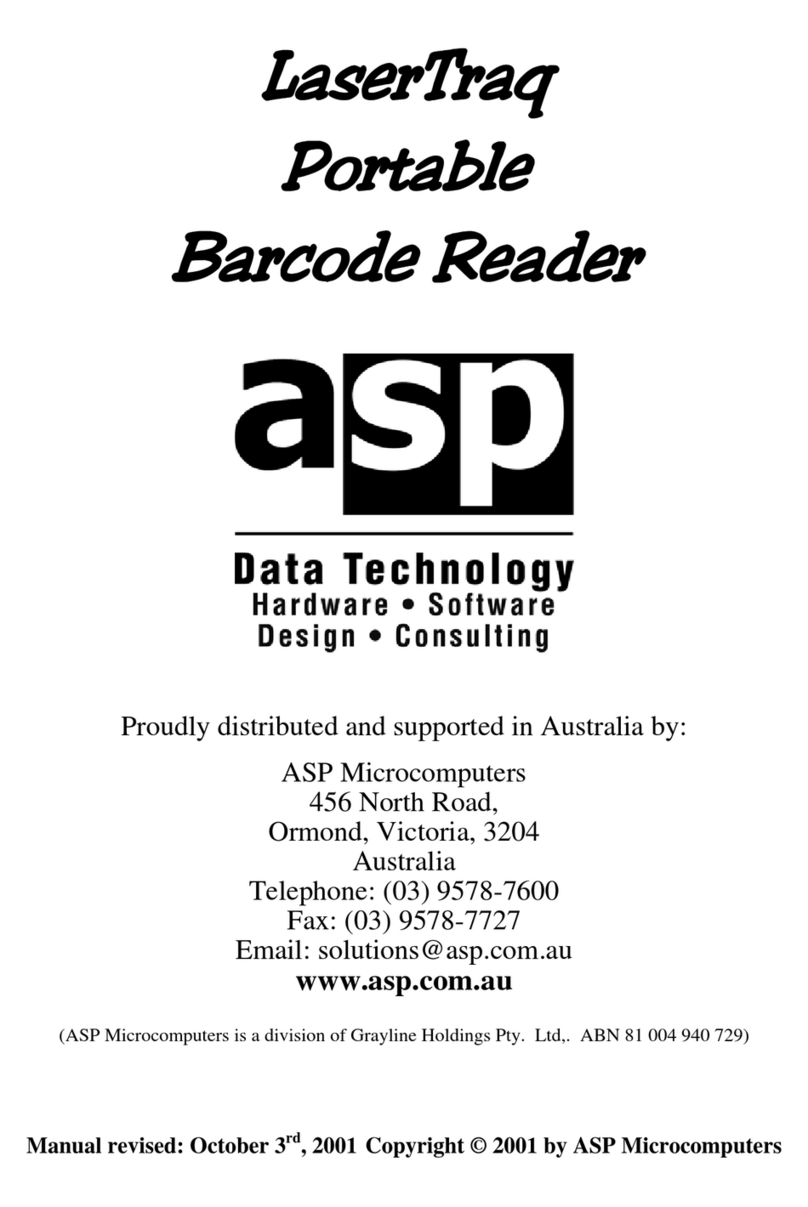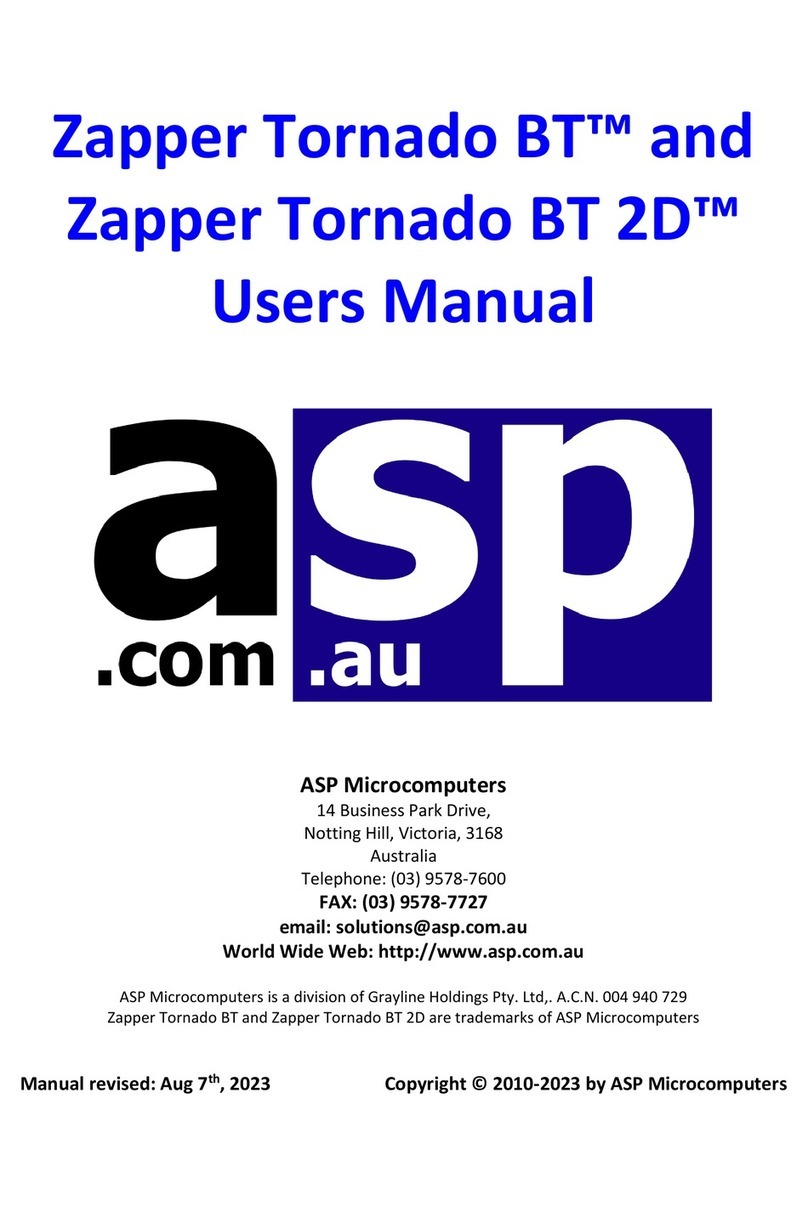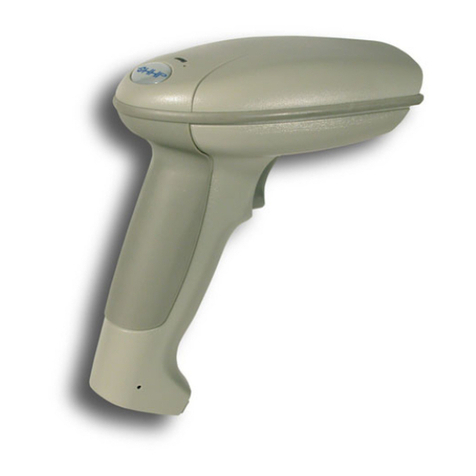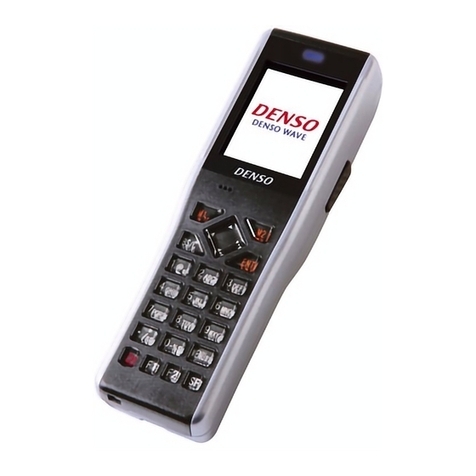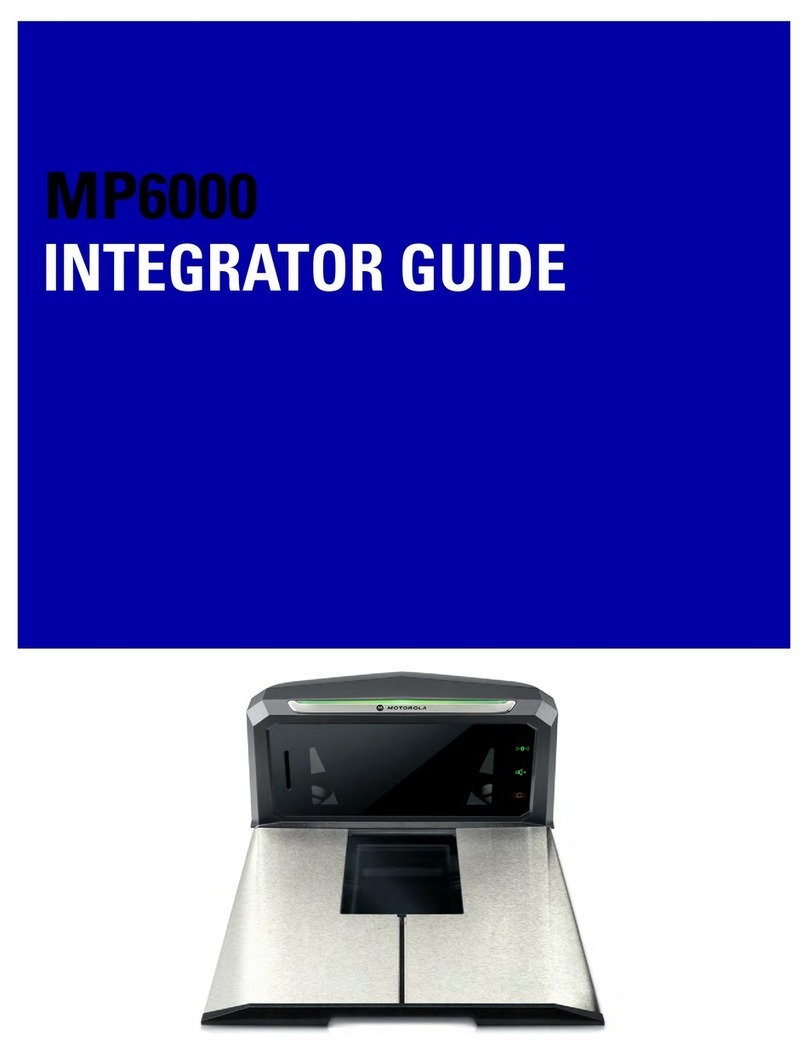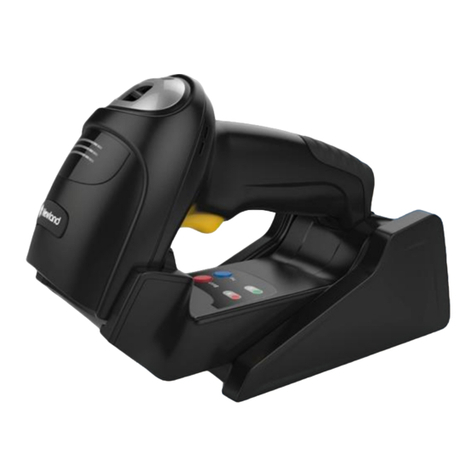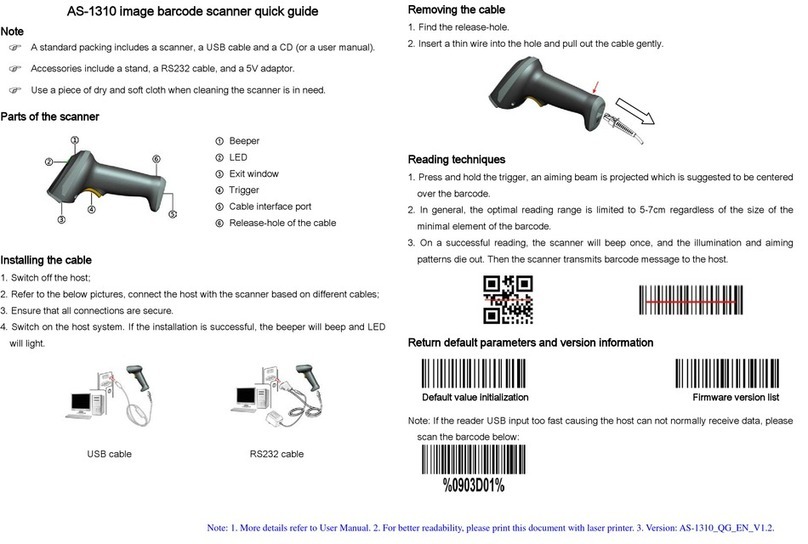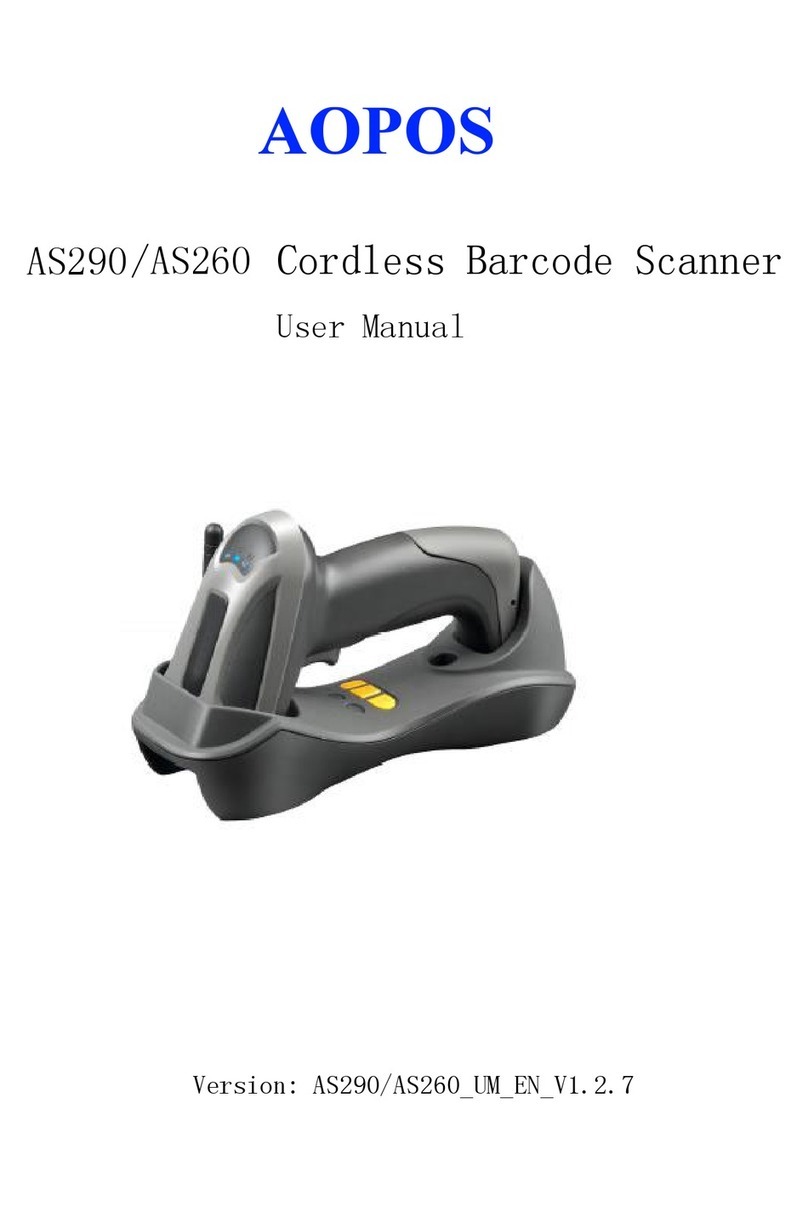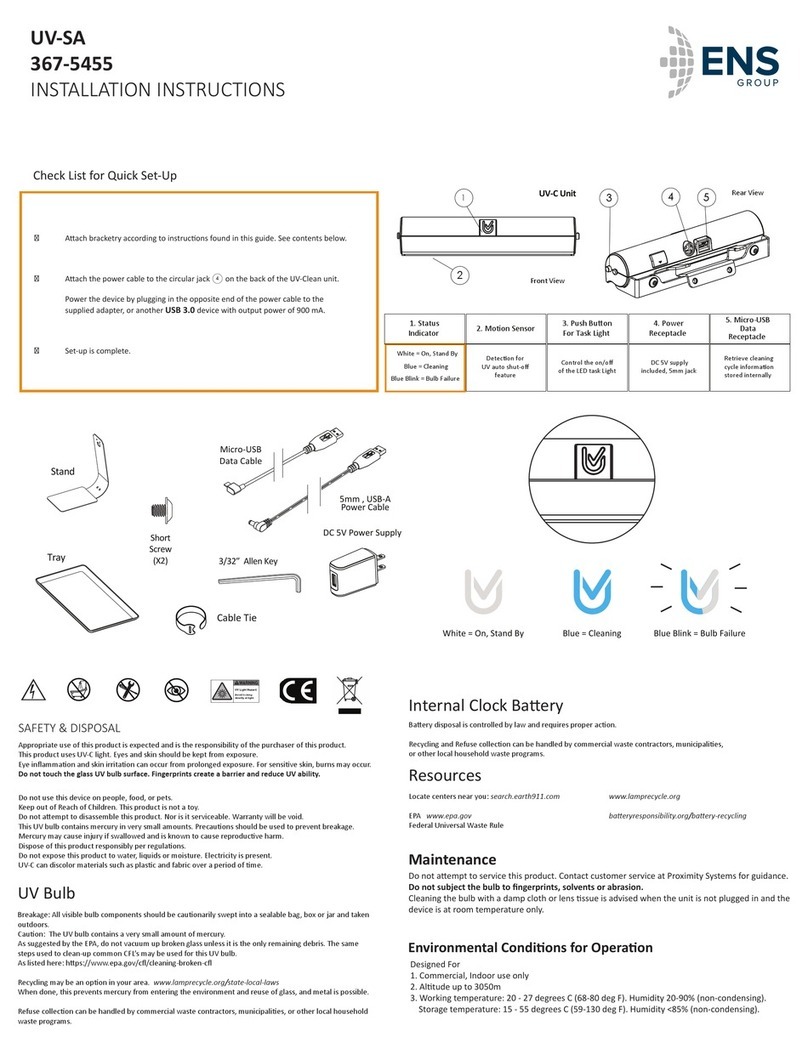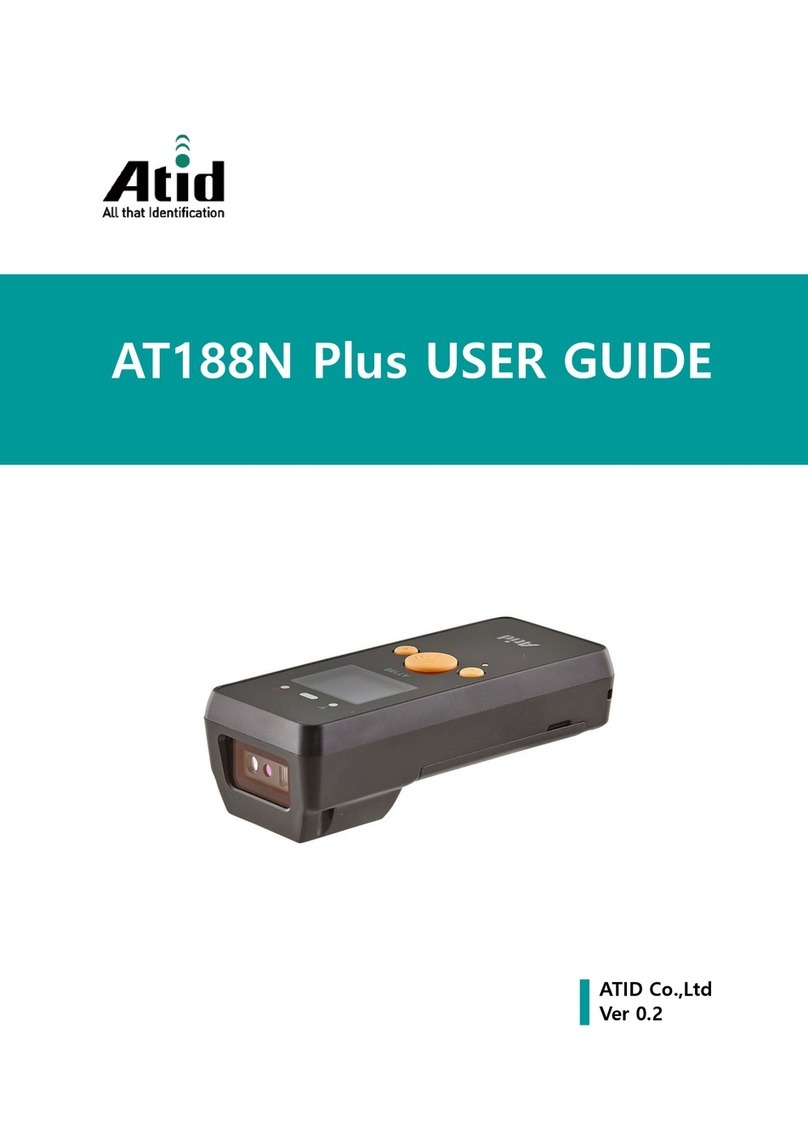2 Barcode Zapper
Barcode Symbologies
Scanning nicely printed barcode labels is simple, and most scanners can
easily read well-printed labels. But because there are so many poorly
printed barcode labels in the real world, the Barcode Zapper has been
designed to handle printing tolerances of up to ± 200% to help it to read
virtually any barcode label, even if it’s badly printed.
The ASP Barcode Zapper auto-discriminates all popular and special
barcode symbologies, including:
•Standard Code 39, Full ASCII Code 39, Code 32, HIBC
•Code 93, Code 11, Codabar, NW-7
•Code 128 A/B/C sets, UCC/EAN 128
•Product Codes (UPC/EAN/JAN/CAN/APN) with addendum
•Standard/Industrial/Matrix/Inverted/Compressed 2 of 5
•MSI/Plessey, UK/Plessey, IBM Delta, BCD, ITF
•Interleaved 2 of 5, Interleaved 2 of 5 S Code, IATA
Host Interfaces
The ASP Barcode Zapper has four standard interface types
built-in - USB, PC Keyboard Wedge, Wand Emulation, and RS-232.
These interfaces are selected via special setup barcodes, and connect via
interchangeable cables.
One cable is supplied with each ASP Barcode Zapper; and additional
adaptor cables are available as optional extras. Adaptor cables can be
removed by pushing the end of a paper clip into the hole near the base
of the Barcode Zapper, and then carefully pulling the connector out.
The standard termination character for the Barcode Zapper is a single
Enter (or carriage return). To remove this terminator, or to change it
back to a single carriage return, please use the setup barcodes on page
12. Other termination characters are also available - please contact ASP
or your dealer with your requirements.
